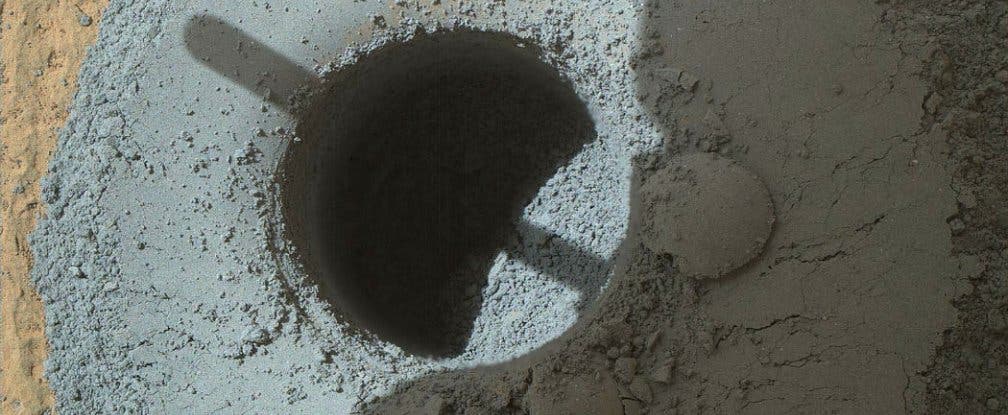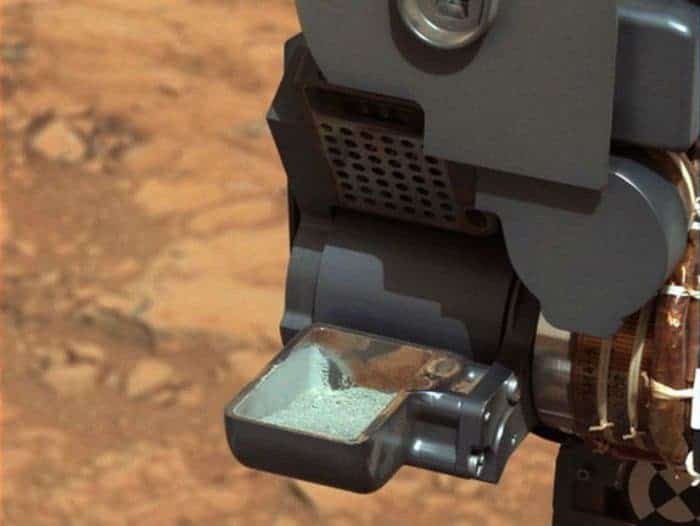Mars – our planetary neighbor, the Red Planet… is not actually red. The first look at what’s under Mars’s dusty red surface has revealed a clearly greyish blue rocky layer.

Curiosity rover has begun digging at a site called Telegraph Peak, the third drilling site in outcrop at base of Mount Sharp, where Curiosity has been working for the past five months. The decision to dig there was based on previous chemical measurements. The goal of Curiosity’s digging there is to figure out how exactly Mars evolved from a wet, lush environment into the dry, arid one we see today.
“The Pahrump Hills campaign previously drilled at two other sites. The outcrop is an exposure of bedrock that forms the basal layer of Mount Sharp. Curiosity’s extended mission, which began last year after a two-year prime mission, is examining layers of this mountain that are expected to hold records of how ancient wet environments on Mars evolved into drier environments”, NASA wrote on their website.
We have known for qute a while that Mars is mostly made of silicon and oxygen (much like Earth), also containing significant quantities of iron, magnesium, aluminium, calcium, and potassium. But when researchers analyzed the blueish-grey samples extracted from Telegraph Peak using the Alpha Particle X-ray Spectrometer (APXS) on the rover’s arm and its internal Chemistry and Mineralogy (CheMin) instrument, they were surprised to see just how much silicon the sample had.
“When you graph the ratios of silica to magnesium and silica to aluminium, ‘Telegraph Peak’ is toward the end of the range we’ve seen,” Curiosity co-investigator Doug Ming, from the NASA Johnson Space Centre in the US, said in the press release. “It’s what you would expect if there has been some acidic leaching. We want to see what minerals are present where we found this chemistry.

The first surprise came from the rocks not being red, but actually much darker.
“We’re sort of seeing a new colouration for Mars here, and it’s an exciting one to us,” Joel Hurowitz, sampling system scientist for Curiosity at NASA’s Jet Propulsion Laboratory (JPL), said in a statement.
So why are we seeing this different colouration for the rocks? The key answer here is likely “oxidation” – the reddish dust on the surface of Mars is subject to oxidation; in other words, it rusts, and turns red. The grey powder that Curiosity collected is hidden and kept safe from that process, and therefore may preserve some indication of what iron was doing, without the implication of the oxidation.
The Curiosity rover will now be journeying away from Pahrump Hills, moving up Mount Sharp to see if the same thing is happening at a higher altitude.






